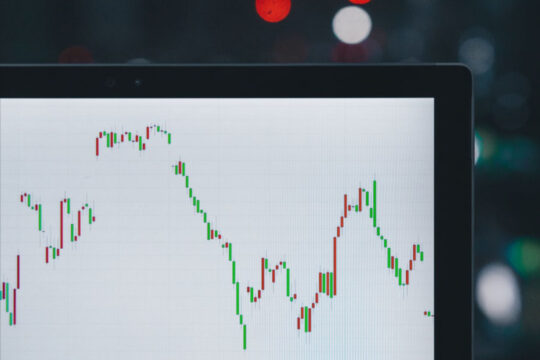
Investors want standardized reporting of sustainability and other non-traditional metrics. What will that look like on a global scale?

Investors want standardized reporting of sustainability and other non-traditional metrics. What will that look like on a global scale?
The growing role of sustainability and non-traditional metrics to inform the engagement between public companies and investors has become a critical issue. Investors are seeking metrics to evaluate a company’s approach to sustainability and its drivers of long-term growth. But the format of these metrics and disclosures has become a sticking point among issuers, investors, and standard setters.
Most institutional investors seek information on environmental, social, and governance issues to better understand risks that could affect companies’ performance over time. These investors use such disclosures to monitor companies’ risk management, inform their votes, or make decisions on stock purchases.
What institutional investment decision-makers need is clear: quantitative, assurable, universally applicable disclosures around what really drives businesses in the long run.
This should come as no surprise, as today’s equity investing is increasingly based on quantitative models and often computer-driven. How these broader disclosures mesh with that model of investing is a lynchpin of the current debate. Organizations around the world have done extensive work on disclosure frameworks, non-traditional metrics, and integrated reporting. These frameworks are targeted at particular stakeholders including advocacy groups, customers, employees, policymakers and investors.
While there are many important constituents for ESG reporting, institutional investors need further disclosures that are material to their decision-making. The difficulty of incorporating varying formats and calculation methodologies from one company to the next is a message we heard loud and clear in a series of working meetings FCLTGlobal held in conjunction with the World Economic Forum (WEF) over the course of the last six months with approximately 70 institutional investors from around the world. The question is: how can companies consistently disclose what is important to investors and to other key stakeholders who may have different needs?
FCLTGlobal’s mission is to rewire capital markets to support a long-term, sustainable economy. Our work concentrates on practical tools for investors and companies to drive long-term performance and measure progress towards long-term objectives.
This discussion on metrics and disclosures is closely tied to that mission, and we have done extensive work in this area, both on our own and in conjunction with the World Economic Forum (WEF), the International Integrated Reporting Council and SASB among others. In particular, we have tested draft metrics and disclosures in detail with many of the world’s largest institutional investors, focusing on those who make security-level buy and sell decisions.
For issuers and investors to coalesce around a common method for these disclosures independently, there are four key considerations to address.
Some regulators emphasize the importance of principles–based disclosures or the “Management Discussion and Analysis” section of reports. In our consultations, we found that investors overwhelmingly prefer quantitative metrics to written disclosures, which are harder to analyze and compare. Quantitative reporting in the form of numeric, machine-readable data and raw numbers (rather than ratios) makes disclosures much more useful for investors. And these numbers must be uniformly defined and consistently calculated to allow for accurate comparison.
Investors prefer historical actual figures that can be audited. While management forecasts can be helpful in some realms, investors need to have historical actuals to test management’s ability to forecast and to hold management accountable. Particularly in the fairly new area of sustainability-related or non-traditional metrics, having auditor assurance of historical numbers as a baseline is critical.
Of course, there are many important stakeholders in most companies – advocacy groups, customers, employees, policymakers, and investors (in no particular order). A key distinction among the many disclosure frameworks is their targeted stakeholder audience. While there may be overlap between what investors and other groups find relevant, investment decision-makers are seeking metrics that show trends in the company’s performance or risk management and which are likely to have a material impact on their long-term return.
As an example, contemporary investors are interested in the composition of the board, the number of employees in various categories, the monetary value of environmental fines, and the amount invested in innovation – none of which is currently disclosed in standard ways. These non-traditional metrics are of clear value to investors and may well be of value to many other stakeholder groups as well.
It is also important to remember that disclosures from publicly listed companies leave aside private companies and many other entities. Broader environmental or social policy goals are unlikely to be accomplished through securities-related disclosures.
Investors build their views of companies based on a mosaic of information that includes both disclosures from the companies themselves and news from other sources – the media, ratings agencies, and alternative data providers, just to name a few. Investors will seek information on companies from the most credible and timely sources. Companies can choose to provide non-traditional metrics to investors or can let investors make their decisions based on others’ data. Understandably, most would prefer to control as much of their own narrative and data as possible.
Furthermore, many companies are already issuing sustainability reports that are not necessarily subject to the rigor of audited financial or investor-oriented disclosures. As investors use such information to make decisions, companies may be liable for any inaccurate portrayals of the company’s efforts in these areas.
In short, investors are seeking to incorporate non-traditional metrics and issues into their analysis of companies – and many are already using this information to inform their decisions. Companies can facilitate this effort by providing appropriate baseline reporting that could be assured by auditors and included in quantitative investment processes.
Of course, companies could also disclose additional metrics and build out reports under key frameworks such as SASB, TCFD or GRI. And these metrics and disclosures would raise new questions and increase dialogue on context rather than being an end in of itself. But for non-traditional disclosures to be useful on a broad scale to quantitative institutional investors, they need to be assurable, numeric metrics that are material to long-term success.
Below are suggestions built on the framework developed by the World Economic Forum in Toward Common Metrics and Consistent Reporting of Sustainable Value Creation, prepared in collaboration with Deloitte, EY, KPMG, and PwC. They have been revised based on input from institutional investors through a series of consultations hosted by FCLTGlobal and the World Economic Forum in February-April 2020. Note that these are all assurable by auditors and reflective of actual performance, not subjective forecasts or judgments.
| Principles of Governance | Comments |
|---|---|
| Composition of the highest governance body | For each board member: Gender, Age, Executive/non-executive, Independence, Tenure Attendance |
| Number of incidents of corruption confirmed during the current year | For each incident: Related to the current year, Related to prior years |
| Composition of company share ownership and voting rights | By group: Management, Board, Founder(s) and their families, Government, Executive/non-executive. For each group: Distinction between purchased and granted shares |
| Percentage of named executive officer compensation that is payable beyond 3 years |
| Planet | Comments |
|---|---|
| GHG Protocol Scope 1 and 2 emissions in tonnes of carbon dioxide equivalent (tCO2e) Estimate of upstream and downstream (GHG Protocol Scope 3) emissions where material GHG Protocol Scope 1 and 2 emissions in tonnes of carbon dioxide equivalent (tCO2e), Estimate of upstream and downstream (GHG Protocol Scope 3) emissions where material | Standardizing approach to measurement is critical |
| Geolocations of major assets | Nature loss consideration may be derived from location data, Need more guidance on methodology |
| Monetary value of environmental fines |
| People | Comments |
|---|---|
| Gender pay equity | Refer to UK Government's Gender Pay Gap Service |
| Number of employees per employee category | For each employee category: Gender, Age, Other indicators of diversity, Absentee rate |
| Monetary value of training and development expenditures | |
| Safety record | Total recordable injury frequency rate |
| Prosperity | Comments |
|---|---|
| Net employment created: Number of new employee hires, Number of employee terminations, Number of furloughs or workers with zero hours | For each job category: Full-time/part-time/contract status, Region |
| Investments: Net investment (capital expenditure less depreciation), Executed buybacks with volume weighted average price, Amount spent on acquisitions and generated from divestitures: (i) Total amount spent on acquisitions, (ii) aggregate proceeds of divestitures, and (iii) aggregate write-downs from acquisitions | |
| Innovation: Total amount of spending on R&D, Total amount of spending on Information Technology |
This list of non-traditional metrics provides what we believe could be a core supplement to already disclosed financial metrics for long-term investors or incorporated into key metrics frameworks. Some of these metrics are linked to strong supporting evidence, connecting them to long-term value creation, while others are not currently disclosed consistently enough to allow for robust study. In the coming months, we plan to continue to study the questions and challenges posed by the current reporting landscape and consider how thoughtful long-term investment decision makers might make use of such non-traditional information. We welcome constructive feedback on the topic at [email protected].

Climate | Article
20 July 2020 - The US Department of Labor proposed new regulatory guideposts for fiduciaries in light of recent trends in ESG investing. Read FCLTGlobal's full comment letter.

Investor-Corporate Engagement, Policy and Geopolitics | Video, Article
23 June 2020 -

Metrics | Article
3 January 2020 - A new step towards integrating long-term metrics in investing.